- Home
- Peter Tremayne
The Second Death (Sister Fidelma Mysteries)
The Second Death (Sister Fidelma Mysteries) Read online
THE SECOND DEATH
Peter Tremayne
Copyright © 2015 Peter Tremayne
The right of Peter Tremayne to be identified as the Author of the Work has been asserted by him in accordance with the Copyright, Designs and Patents Act 1988.
First published in this Ebook edition in 2015 by HEADLINE PUBLISHING GROUP
Apart from any use permitted under UK copyright law, this publication may only be reproduced, stored, or transmitted, in any form, or by any means, with prior permission in writing of the publishers or, in the case of reprographic production, in accordance with the terms of licences issued by the Copyright Licensing Agency.
All characters in this publication are fictitious and any resemblance to real persons, living or dead, is purely coincidental.
Cataloguing in Publication Data is available from the British Library
Cover photo © aka-images/Erich Lessing
eISBN 978 1 4722 0836 1
HEADLINE PUBLISHING GROUP
An Hachette UK Company
Carmelite House
50 Victoria Embankment
London EC4Y 0DZ
www.headline.co.uk
www.hachette.co.uk
Contents
Title Page
Copyright Page
About the Author
Praise for the Sister Fidelma series
Also by Peter Tremayne
About the Book
Dedication
Epigraph
Principal Characters
Map
Author’s Note
Chapter One
Chapter Two
Chapter Three
Chapter Four
Chapter Five
Chapter Six
Chapter Seven
Chapter Eight
Chapter Nine
Chapter Ten
Chapter Eleven
Chapter Twelve
Chapter Thirteen
Chapter Fourteen
Chapter Fifteen
Chapter Sixteen
Chapter Seventeen
Chapter Eighteen
Chapter Nineteen
Chapter Twenty
About the Author
Peter Tremayne is the fiction pseudonym of Peter Berresford Ellis, a well-known authority on the ancient Celts, who has utilised his knowledge of the Brehon law system and seventh-century Irish society to create a new concept in detective fiction.
An international Sister Fidelma Society has been established, with a journal entitled The Brehon appearing three times yearly. Details can be obtained either by writing to the Society at PMB #312, 1818 North Taylor Street, Suite B, Little Rock, AR 72207, USA, or by logging onto the society website at www.sisterfidelma.com.
Praise for the Sister Fidelma series:
‘The Sister Fidelma books give the readers a rattling good yarn. But more than that, they bring vividly and viscerally to life the fascinating lost world of the Celtic Irish. I put down The Spider’s Web with a sense of satisfaction at a good story well told, but also speculating on what modern life might have been like had that civilisation survived’ Ronan Bennett
‘Rich helpings of evil and tension with lively and varied characters’ Historical Novels Review
‘The detail of the books is fascinating, giving us a vivid picture of everyday life at this time … the most detailed and vivid recreations of ancient Ireland’ Irish Examiner
‘A brilliant and beguiling heroine. Immensely appealing’ Publishers Weekly
‘Tremayne’s super-sleuth is a vibrant creation, a woman of wit and courage who would stand out in any era, but brings a special sparkle to the wild beauty of medieval Ireland’ Morgan Llywelyn
By Peter Tremayne and featuring Sister Fidelma:
Absolution by Murder
Shroud for the Archbishop
Suffer Little Children
The Subtle Serpent
The Spider’s Web
Valley of the Shadow
The Monk who Vanished
Act of Mercy
Hemlock at Vespers
Our Lady of Darkness
Smoke in the Wind
The Haunted Abbot
Badger’s Moon
Whispers of the Dead
The Leper’s Bell
Master of Souls
A Prayer for the Damned
Dancing with Demons
The Council of the Cursed
The Dove of Death
The Chalice of Blood
Behold a Pale Horse
The Seventh Trumpet
Atonement of Blood
The Devil’s Seal
The Second Death
About the Book
Peter Tremayne, highly acclaimed author of The Devil’s Seal and Atonement of Blood, returns with The Second Death, his new Celtic mystery featuring super-sleuth Sister Fidelma.
Ireland AD 671; the Great Fair of Bealtain is almost upon the fortress of Cashel, and a line of gaudily painted wagons brings entertainers to mark the occasion. But their journey is marred when one wagon is found to contain the corpses of a young man and girl – lying poisoned – within.
As Sister Fidelma and her companion Eadulf begin to investigate, they are quickly plunged into the threatening marshlands of Osraige – where the bloody origin of the Abbey of Cainnech is coming back to wreak vengeance. But what is the symbolism of the Golden Stone, and who are the members of the mysterious Fellowship of the Raven? Fidelma and Eadulf must face death more than once before they can untangle an evil that strikes at the very foundation of the kingdom.
For Vick and Stef Van Leeuwen
and certainly not forgetting
Harry, Callum and Ella
Et infernus et mors missi sunt in stagnum ignis haec mors secunda est stagnum ignis.
This is the second death, the lake of fire.
Revelation 20:14
Vulgate Latin translation of Jerome 4th century
PRINCIPAL CHARACTERS
Sister Fidelma of Cashel, a dálaigh or advocate of the law courts of seventh-century Ireland
Brother Eadulf of Seaxmund’s Ham, in the land of the South Folk, her companion
At Cashel
Colgú, King of Muman and brother to Fidelma
Finguine, tánaiste or heir apparent to the kingship
Alchú, son of Fidelma and Eadulf
Muirgen, nurse to Alchú
Dar Luga,airnbertach or housekeeper to the palace
Brother Conchobhar, an apothecary
Ferloga, visiting tavern-keeper from Rath na Drinne
Ségdae, Abbot of Imleach and Chief Bishop of Muman
Fíthel, Chief Brehon of Muman
Warriors of the King’s Bodyguard
Aidan, Acting Commander
Enda
Luan
In Cashel township
Rumann, tavern-keeper
Cerball, Lord of Cairpre Gabra
Among Cleasamnaig Baodain (Baodain’s Performers)
Baodain, leader of the Performers
Escrach, his wife
Echdae, a bareback rider
Echna, his partner
Tóla, horse trainer
Ronchú, a conjuror
Comal, his wife
On the marshes in Osraige
Rechtabra, a farmer
Ríonach, his wife
Duach, Rechtabra’s friend
Cellaig, Rechtabra’s friend
On the Mountains of the High Fields
Brother Finnsnechta, a hermit
At Cill Cainnech
Feradach,cenn-feadh, Commander of the township guard
Abbot Saran
B
rother Failge, his steward
Ruán, Brehon to Coileach, Lord of the Marshes
Dar Badh, a servant
AUTHOR’S NOTE
The events of this story follow in chronological sequence those related in The Devil’s Seal. The year is AD 671, in the last days of the month once called Giblean, now April, during the approach of the Bealtaine Fair at Cashel, held on the first day of Cetsoman, which is explained in Cormac’s ninth-century Glossary (Sanas Chormaic) as cét-sam-sín, the first weather of summer, which we now call May.
It might add to the reader’s appreciation to know that the annals and chronicles of Ireland record, in the period leading up to these events, the burning and destruction of three great Irish abbeys; these were Armagh, Bangor and the ‘House of St Telle’, the latter being located on the Westmeath border. Although there is a slight variation of dates between the annals, I have accepted the dating wisdom of Annála Ríoghachta Éireann (Annals of the Kingdom of Ireland) more popularly known as ‘The Annals of the Four Masters’.
It might also interest readers that Clochar (today anglicised as Clogher in Co. Tyrone), the ‘place of the stone’, was the site of an abbey and later cathedral founded by St Macartan (Aedh Mac Cairthinn), the disciple and friend of St Patrick. The modern church is only a small one. The ninth-century Félire Óengusso records that a stone stood on the right hand of the porch of the cathedral. Once covered in gold and silver, it was called the Cermand Cestach and had been worshipped by pre-Christians. Cermand was thought to be a local idol, but Cestach means ‘dark riddles’. The stone was also referred to as the Cloch Ór (Golden Stone), said to be a great icon of the Druids, and was noted in the medieval Vita S. Maccarthinni Episcopi Clocharensus. The existence of the stone was also mentioned in commentaries even down to the eighteenth century. Today, however, it no longer seems to exist.
And for those who like to know locations, Durlus Éile is Thurles, Co. Tipperary; Cill Cainnech (modern Irish – Cill Chainnigh) is, of course, Kilkenny; Sliabh Ard Achaigh (in modern Irish, shortened to Sliabh Ardagh) are the Slieveardagh Hills – the Mountains of the High Fields. Nearby, you may still find where Brehon Ruán dwelled at Tulach Ruán, which is anglicised as Tullaroan, and Osraige is, of course, Ŏssory.
CHAPTER ONE
The line of half a dozen or so gaudily painted wagons, some pulled by patient mules and others by oxen, wound its way along the Slíge Dála, the main highway which ran from Tara in the north-east, all the way to Cashel, capital of Muman, the most south-westerly of the Five Kingdoms of Éireann. On a small rise overlooking the ‘Way of the Blind’ – a road so-called because it was said that it was so well built, even the blind could travel it in safety – two figures on horseback watched the wagons moving slowly along its broad stretch.
‘Where are they off to?’ demanded Brother Eadulf, surprise in his voice for he and his fellow traveller had only just breasted the rise and spotted the procession.
The young warrior at his side, Aidan, a member of the King of Muman’s élite bodyguard, the Warriors of the Golden Collar, replied indifferently, ‘To Cashel, I dare say, friend Eadulf. Where else would they be going at this time of year?’
‘But for what purpose?’ Eadulf was irritated for he knew well where the Slíge Dála ended. Had he not ridden its entire length from Cashel to Tara and back again only a few years before? Yet Aidan’s answer implied that he should know something more.
‘Have you forgotten that in a few days it will be Bealtaine, the Feast of the Fires of Bel?’
Eadulf frowned, still trying to make a connection. ‘Therefore?’ he prompted.
‘Why, it is the day of the Oenach, the Great Fair of Cashel, to mark the start of the pastoral summer season.’
A memory stirred. ‘I had forgotten,’ Eadulf admitted. ‘You see, I have never been in Cashel during the festival time. The Fates have always placed Fidelma and me in many other parts of the world when the fair has been held.’
‘Then you will enjoy it for the first time,’ Aidan said warmly. ‘The fair lasts nine days in which there are athletic sporting contests of all sorts, such as archery, and demonstrations of prowess with arms, horse racing, feats of skill from professional entertainers, feasting, assemblies presided over by the King and his Chief Brehon … why, even the great fairs of Taillteann, Tlachtga and Carman pale into insignificance compared with our fair.’
Eadulf smiled at the young man’s boastful enthusiasm and turned his attention back to the line of wagons moving steadily south-west along the great road of timber planking, placed directly over the low-lying and boggy marshlands. On firmer terrain, roads were built differently. They were formed of impacted earth and stone, but through bogland the ingenuity and sophistication of the road-builders was apparent. The road was laid with birch runners traversed by large oak planks, the latters’ weight keeping the runners in place and providing a broad and level surface – to the extent that two wagons could pass each other at speed. The road could cross waterlogged areas in the manner of a pontoon, or cross streams and rivers by means of wooden or stone bridges. As Eadulf had discovered, their building and maintenance were strictly governed by law, and the responsibility for the upkeep of the roads lay with the local chieftain.
Eadulf knew that from this spot where he and Aidan had halted, the road ran on for another twenty or so kilometres to the great Rock of Cashel, which reared above the plains and on which the fortress of Colgú the King dominated the surrounding countryside. As the road moved through this marshland, here and there little hillocks rose out of the bog, like islands rising from the sea. And the bogland could be just as treacherous and unforgiving as the sea to those who missed their way and were sucked into its greedy maws. And even if he had forgotten that it was soon to be the feast day of the Fires of Bel, the ancient God of Light, he should have been reminded by the mass of yellow flowers, symbolic of ‘fire’, that were now bursting into life across the countryside: broom, bog myrtle, marsh-marigolds, even hawksweed appeared here and there.
On the far side of the highway stood a bog island that he recognised because it seemed to be a mass of impenetrable oak trees made even darker by the overgrowth of ivy that clung everywhere. It was called Daire Eidnech – the Ivied Oak Grove. He knew that among those oaks was a small religious community which had been established a hundred years before by the Blessed Ruadhán of Lothra.
A series of short sharp bird-calls caused him to glance up at the pale late-spring sun. He saw the small, hovering bird with its familiar grey and russet feathers, as the kestrel began dropping down on its prey. A hare was leaping away at that moment, and even if the kestrel had been large enough to deal with the mammal, its element of surprise was gone. Eadulf noted the animal’s escape with a certain amount of satisfaction. He briefly wondered why local hares did not dig burrows as they did in his own land. The hares here made their form, or lair, in an oval-shaped hollow within a moss hummock. Even as he formed the question, the obvious answer came to him: it was impossible to dig a dry burrow in the wet bogland.
‘We should join the main highway, friend Eadulf, if we wish to get to Cashel before dark,’ Aidan said, interrupting his thoughts, gesturing towards the position of the sun.
Eadulf acknowledged this with a nod of his head and nudged his placid grey-white cob, with its black patch on the forehead, down the rise, keeping to the small dry track that they had been following through the marsh in order to join up with the larger highway. It was not difficult to follow the path which wound its way across the hummocks, but one had to be extra careful in places, since it would be dangerous to miss one’s footing, with the marshland clawing on either side. Even a path such as this, only big enough for one horse to move in single file, was listed in law, and neighbouring chieftains were deemed responsible for seeing to its maintenance.
It took the two men some time to negotiate their way onto the main highway, where they paused for a moment.
‘We should be home well before sundown,’ Aidan sai
d confidently. ‘The way is easy from here so we can increase the pace, if you wish. The horses won’t tire on this firm surface, and it’s not far now.’
Eadulf replied with an immediate shake of his head. It was only with extreme reluctance that he made any journeys at all on horseback, even when the mount was placid of temper, like his cob.
‘We’ll keep to a steady pace,’ he said. ‘There’s plenty of time.’
They set off, relaxing in the afternoon light for, weak as it was, the sun was still warming to the body. They had soon covered a few kilometres, with the ground rising gradually away from the marshland and the more dominant hills now appearing to the south and west. It was as they were coming through an area of sparse woodland that they saw the pall of smoke ahead and smelled the bitter odour of burning on the faint breeze that wafted in their direction. As they followed the roadway, curving through the wood, they came across a long stretch of the highway. Ahead of them, the line of wagons which they had seen previously was halted to one side of the road.
It was obvious what had caused the pall of smoke. The last wagon in the line was still wreathed in it, although there was no fire. A group of men and women surrounded it; many of them were still carrying buckets, others holding brooms of bound twigs or blankets. The pair of oxen that had been hauling the burned wagon had been unharnessed and led some distance along the road to safety. Now it seemed an argument was ensuing among those who had been putting out the fire. There was shouting and fierce gesticulating.
Aidan increased his horse’s pace to a trot to bring him swiftly to the scene. The sound of the approaching horses made the band of people turn and those arguing to fall silent as they watched Aidan and Eadulf come nearer.
‘Is anyone hurt?’ Aidan called as he halted his mount. The actual fire did not appear to have been a bad one, fortunately.
No one replied for the moment but several people glanced to one of their number, a tall, broad-shouldered man, who was obviously their leader. He looked like a blacksmith, with bare forearms and a leather jerkin which did little to disguise his muscular arms. His pale blue eyes contrasted with his dark, curly hair.

 The Shapeshifter's Lair
The Shapeshifter's Lair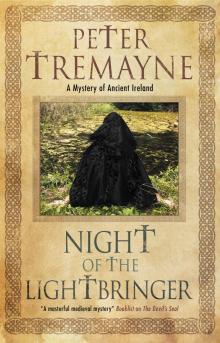 Night of the Lightbringer
Night of the Lightbringer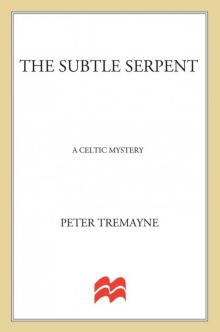 The Subtle Serpent
The Subtle Serpent Smoke in the Wind
Smoke in the Wind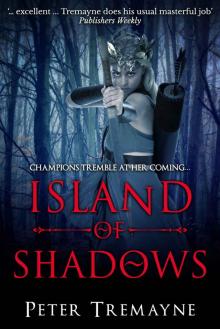 Island of Shadows
Island of Shadows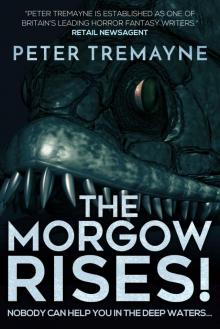 The Morgow Rises!
The Morgow Rises!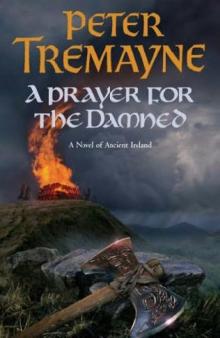 A Prayer for the Damned sf-17
A Prayer for the Damned sf-17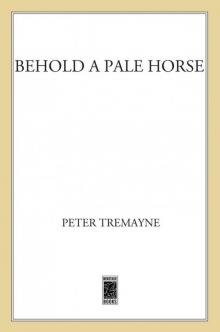 Behold a Pale Horse
Behold a Pale Horse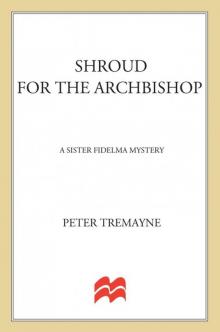 Shroud for the Archbishop
Shroud for the Archbishop The Banshee (sister fidelma)
The Banshee (sister fidelma)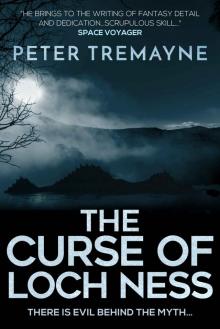 The Curse of Loch Ness
The Curse of Loch Ness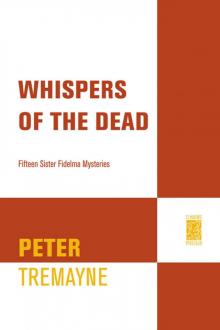 Whispers of the Dead
Whispers of the Dead Behold a Pale Horse sf-22
Behold a Pale Horse sf-22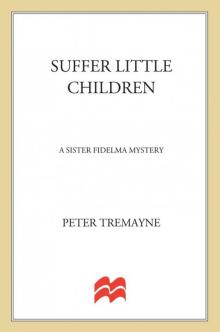 Suffer Little Children
Suffer Little Children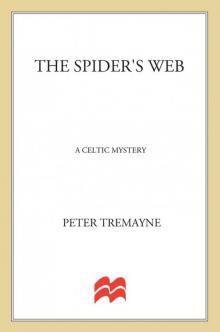 The Spider's Web
The Spider's Web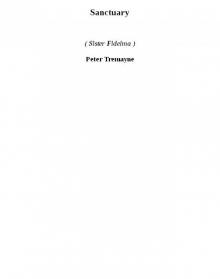 Sanctuary (sister fidelma)
Sanctuary (sister fidelma)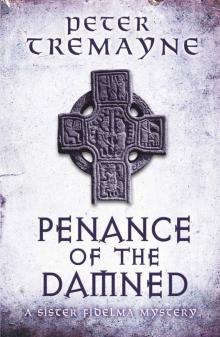 Penance of the Damned (Sister Fidelma)
Penance of the Damned (Sister Fidelma)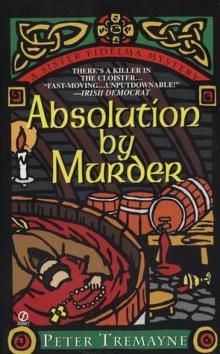 Absolution by Murder
Absolution by Murder A Scream From The Sepulchre
A Scream From The Sepulchre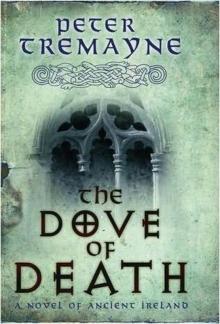 The Dove of Death sf-20
The Dove of Death sf-20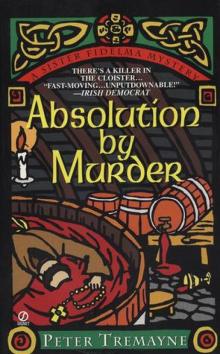 Absolution by Murder sf-1
Absolution by Murder sf-1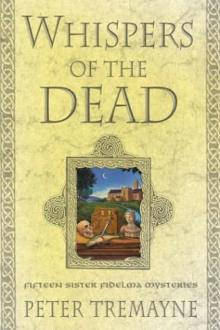 Whispers of the Dead sf-15
Whispers of the Dead sf-15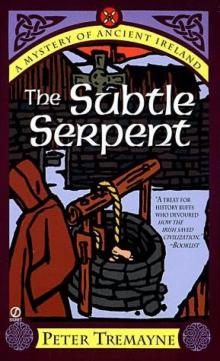 The Subtle Serpent sf-4
The Subtle Serpent sf-4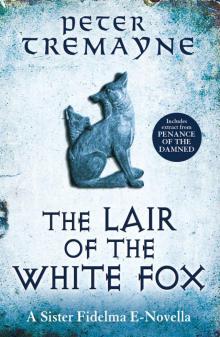 The Lair of the White Fox (e-novella) (Kindle Single)
The Lair of the White Fox (e-novella) (Kindle Single)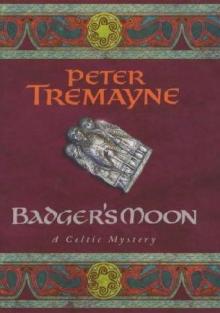 Badger's Moon sf-13
Badger's Moon sf-13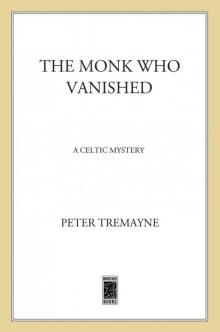 The Monk Who Vanished
The Monk Who Vanished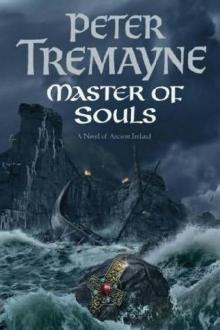 Master of Souls sf-16
Master of Souls sf-16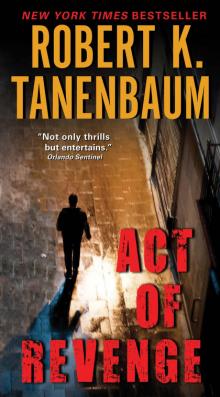 Act of Mercy sf-8
Act of Mercy sf-8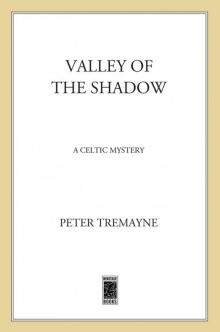 Valley of the Shadow
Valley of the Shadow Act of Mercy
Act of Mercy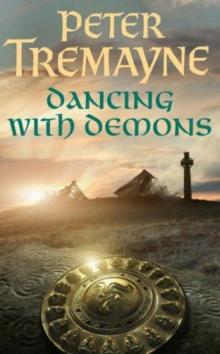 Dancing With Demons sf-18
Dancing With Demons sf-18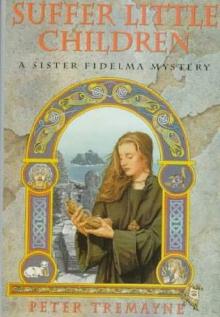 Suffer Little Children sf-3
Suffer Little Children sf-3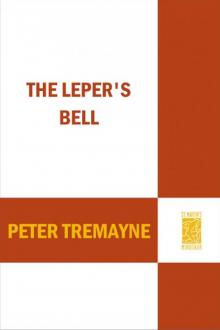 The Leper's Bell
The Leper's Bell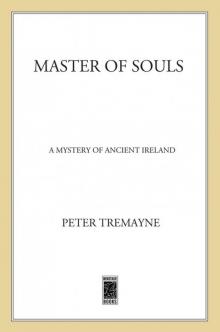 Master of Souls
Master of Souls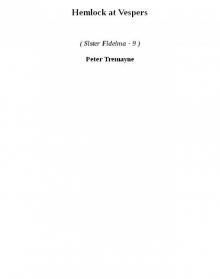 Hemlock at Vespers sf-9
Hemlock at Vespers sf-9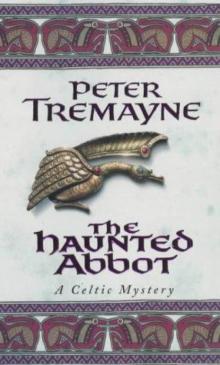 The Haunted Abbot sf-12
The Haunted Abbot sf-12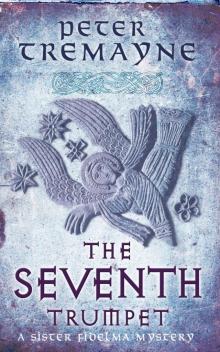 23- The Seventh Trumpet
23- The Seventh Trumpet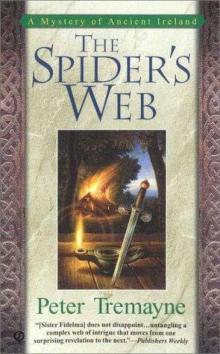 The Spider's Web sf-5
The Spider's Web sf-5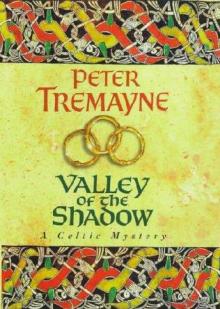 Valley of the Shadow sf-6
Valley of the Shadow sf-6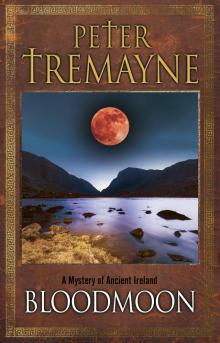 Bloodmoon
Bloodmoon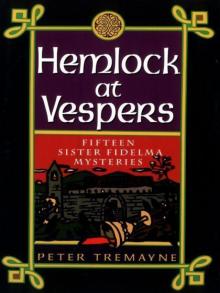 Hemlock at Vespers: Fifteen Sister Fidelma Mysteries
Hemlock at Vespers: Fifteen Sister Fidelma Mysteries The Council of the Cursed
The Council of the Cursed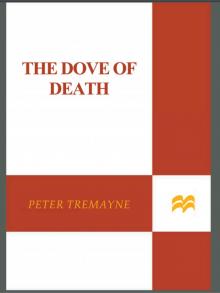 The Dove of Death
The Dove of Death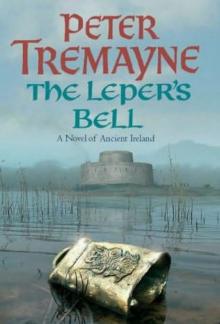 The Leper's bell sf-14
The Leper's bell sf-14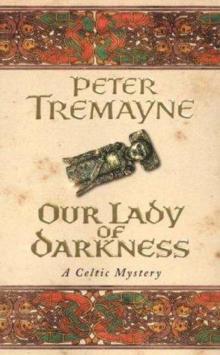 Our Lady of Darkness sf-10
Our Lady of Darkness sf-10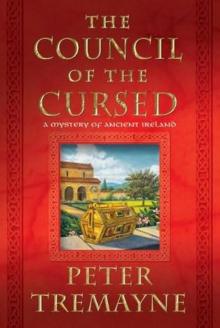 The Council of the Cursed sf-19
The Council of the Cursed sf-19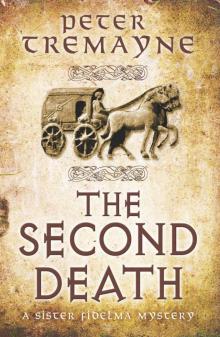 The Second Death (Sister Fidelma Mysteries)
The Second Death (Sister Fidelma Mysteries) The Fiery Devil
The Fiery Devil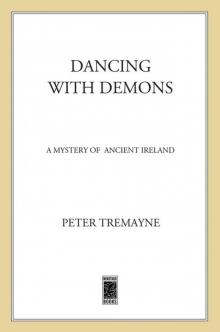 Dancing With Demons
Dancing With Demons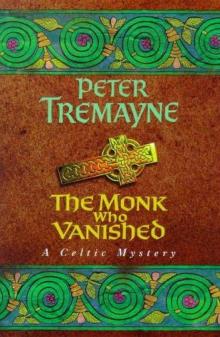 The Monk Who Vanished sf-7
The Monk Who Vanished sf-7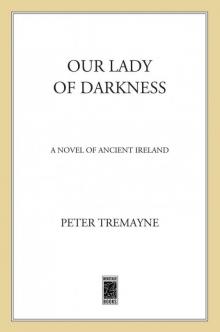 Our Lady of Darkness
Our Lady of Darkness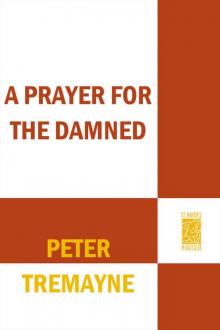 A Prayer for the Damned
A Prayer for the Damned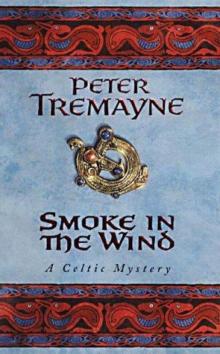 Smoke in the Wind sf-11
Smoke in the Wind sf-11 An Ensuing Evil and Others
An Ensuing Evil and Others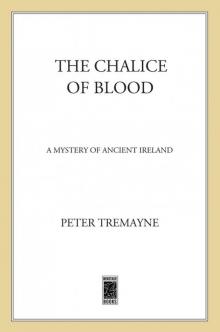 Chalice of Blood
Chalice of Blood